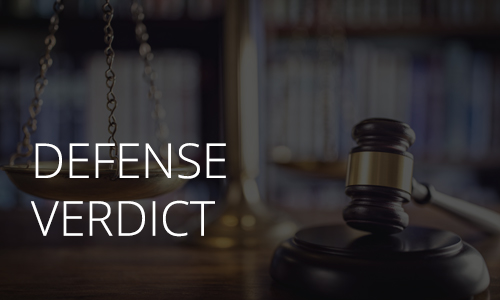Our Claims and Legal team secured a defense verdict in Suffolk County Supreme Court on behalf of a neurologist, otolaryngologist, infectious disease specialist, and a professional corporation in a case with high exposure. The case concerned an allegation of cavernous sinus thrombosis, left internal carotid artery thrombosis and left middle cerebral artery stroke in a married, employed female with 2 adult children.
The plaintiff was a 42-year old female who worked as a claims adjuster. On May 5, the patient underwent a transsphenoidal drainage of a Rathke cyst. The patient had two similar drainages in the past with the more recent one being performed 6 months prior. During the third surgery, a fat graft was placed to prevent leakage of cerebrospinal fluid. Following the third surgery, the patient complained of residual headaches. On June 4th, 1 month after the third operation, the patient was admitted to the hospital by her internist for a persistent headache and fever.
An infectious disease specialist was consulted. A CT of the head indicated possible sinusitis. A lumbar puncture was positive for increased protein and meningitis was considered. IV antibiotics were initiated. On hospital day #3, an MRI MRA of the head was performed, revealing postoperative changes incident to prior hypophysectomy and bilateral sphenoid sinusitis. On day #5, ENT was consulted. The otolaryngologist noted purulent nasal discharge. Saline flushes and oral antibiotics were recommended, with a plan to consider debridement should the patient’s symptoms persist. The following day, the patient was feeling better and she was discharged with follow-up.
Approximately 6 weeks after discharge, the patient suffered occlusion of the left middle cerebral artery causing cerebral infarction. The patient claimed to have sustained permanent neurological sequelae and brought suit against the physicians involved in the June 4th hospitalization alleging that her improperly treated infection of her sphenoid sinus produced inflammation of adjacent blood vessels running through the sphenoid sinus leading to disruption of the arterial walls and development of a cavernous sinus thrombosis, left internal carotid artery thrombosis and left middle cerebral artery thrombus culminating in the plaintiff’s stroke and subsequent neurological deficits.
At trial, the plaintiff attorney tried to show that the defendants improperly treated the patient’s post-operative sinus condition in the setting of recent surgery. According to the plaintiff attorney’s legal theory, the defendants ought to have drained the patient’s sinus and culture the purulent fluid which they believe would have identified a fungal infection. Their opinion that this may have been an untreated fungal infection was given credence by a subsequent culture which showed Scytaladium. Furthermore, plaintiff’s counsel argued that the physicians involved failed to recognize the lack of enhancement of the cavernous sinus and adjacent branch of the internal carotid artery on the patient’s MRI/MRA, and had a balloon procedure been performed to open of the internal carotid artery, the patient might have been spared neurologic injury.
Our legal team was able to show that, during the course of hospitalization, the physicians involved took all the appropriate steps, including obtaining all the needed consultations and ordering all of the appropriate tests. The defense team was able to show the jury that antibiotics were appropriately prescribed at the first sign of possible infection and that obtaining a culture and drainage during the hospitalization was not definitively indicated. Even had the fluid been sent for culture at that time, the patient had been on antibiotics already and the culture may not have been positive. If the culture was positive, it is still likely that a trial of antibiotics probably would have been the appropriate course of treatment during the first hospitalization. Furthermore, the defense was able to inform the jury that the diagnosis of a fungal infection made during the second hospitalization was spurious and likely due to contamination. Finally, the defense team was able to counter plaintiff counsels attempt to criticize the defendants’ response to the MRI results. After evaluating all the evidence, the jury returned a verdict in favor of all our defendants.
